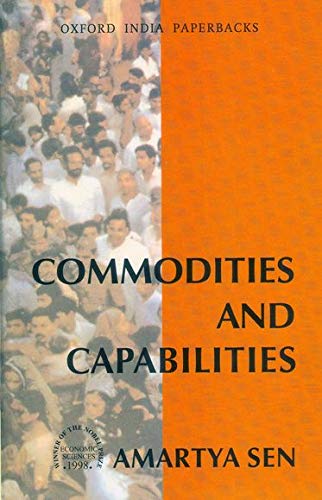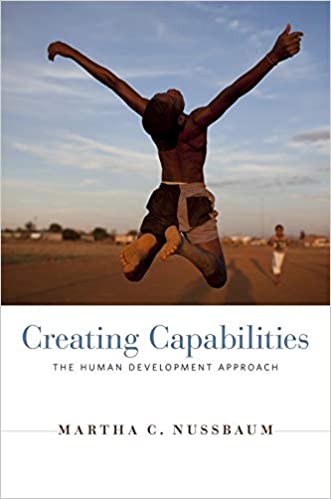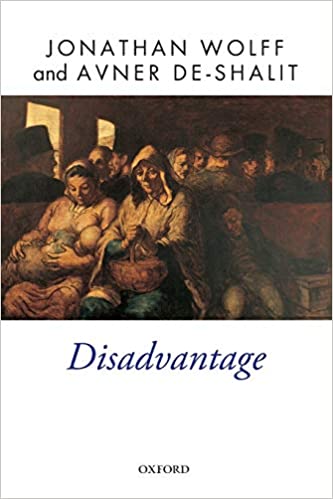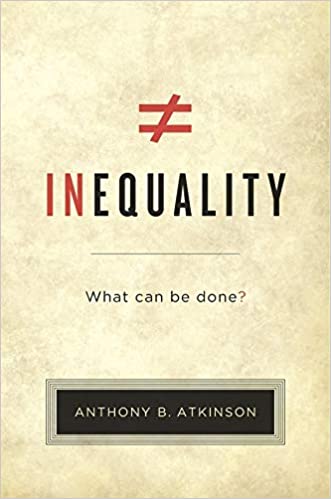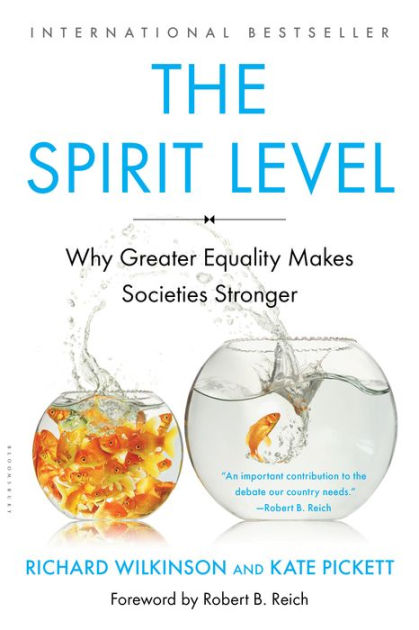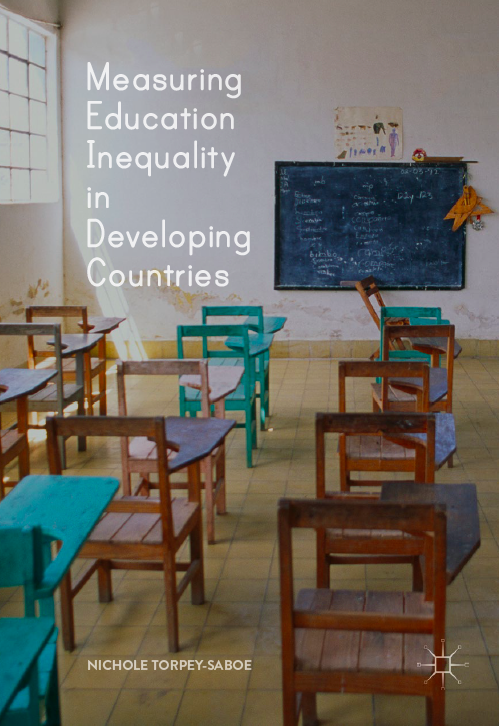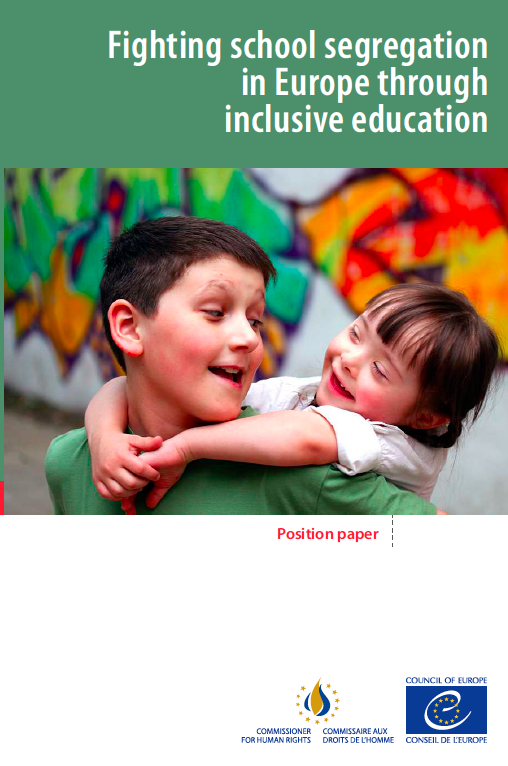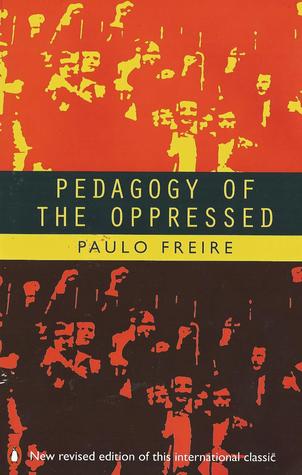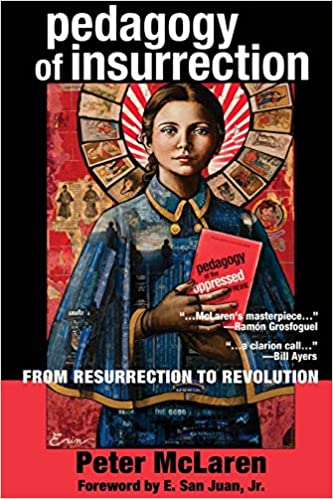Diskutime
Education & Inequality
We look forward to hearing your views in facebook comments!
disadvantage
refers to an unfavorable social predicament, that hinders a person, a community, or a social group in manifold aspects of its life. Being disadvantaged literally means being deprived of certain advantages which would otherwise contribute to the improvement of one’s life. For decades the European Union has mainly used economic (income and expenditure) indicators to assess and combat disadvantage. Yet, since disadvantage is a plural, complex, and contextual problem, important efforts have been made during the last two decades to illuminate the multidimensional character of disadvantage.
This conceptual enrichment of the notion of disadvantage, and the Europan Union’s shift from a narrow income perspective to attempts at integrating economic indicators into a broader picture of deprivation (like non-monetary issues such as education, employment, housing, and health) has been inspired by *Amartya Sen’s capability approach. Seen through the perspective of capabilities disadvantage is not only a matter of access to and possession of resources (goods and services) but also a matter of what a person is able to do and to be. Capability is not merely ability, it doesn’t simply refer to what people are able to do but to their freedom and liberty to do and be in ways they value and have reason to value. This approach shifts our attention from resources to start focusing on the extent a person has the opportunity to have control over those resources, and to use them in ways beneficial for the person’s well-being.
The extent to which someone has the opportunity and freedom to be and to do in ways that enable advantages depends on so-called conversion factors which represent the person’s capability to transform resources (not only goods and services, but different forms of capital – economic, cultural, social – see *Pierre Bourdieu) into functionings, namely into certain achievements a person manages to do or be – like being adequately nourished, being in good health, being able to take part in the life of the community, having self-respect and so on. (The question of what the essential capabilities are is still a matter of debate, the most relevant list of fundamental human capabilities has been developed by *Martha Nussbaum, a famous proponent of the capability approach, whose work became highly influential in terms of how EU institutions and bodies approach disadvantage and poverty.) Let’s take an example from the field of education that might illuminate the relevance of the capability approach:

An able-bodied child with good socio-economic circumstances has a high conversion factor enabling her to convert a tablet for instance into the ability to take part in the virtual life of the school community and to engage herself in autonomous, self-regulated learning. Whereas a child with visual impairment or without proper access to the internet (or to electricity) has a very low conversion factor in the same regard.
In sum, taking into account a person’s capability to achieve certain beneficial functionings became an important conceptual supplement to the predominant economic approach to disadvantage. Hence,
disadvantage is both a matter of being deprived of beneficial resources and also a matter of not being able to utilize certain resources and therefore not being capable of achieving beneficial functionings.
⥄ in tension with → inequality
Further readings:
Sen, Amartya (1999). Commodities and Capabilities. New Delphi: Oxford University Press.
Bourdieu, Pierre (2002). The Forms of Capital. In Readings in Economic Sociology (pp. 280–291). Oxford: Blackwell Publishers Ltd.
Nussbaum, Martha C. (2011). Creating Capabilities: The Human Development Approach. Cambridge: Harvard University Press.
Wolff, Jonathan, & De-Shalit, Avner (2007). Disadvantage. Oxford: Oxford University Press.
inequality
is a central concept in social justice theories. It refers to states of not being equal in terms of class, gender, ethnicity, ability, and various other aspects of human life, such as education, health, political participation, and so on. There are two dominant perspectives for assessing inequality: 1) the view of outcomes problematizes the unjust unevenness of personal achievements in terms of material wealth, living conditions, level of education, health, and so on; 2) the view of opportunities problematizes the extent to which personal circumstances determine personal outcomes.
While the approach to outcomes is concerned with making personal achievements more equal, and thus puts the focus on the “finish line”, the approach to opportunity is concerned with compensating →disadvantages by ensuring a common “starting place”. While the dominant approach in EU policy-making strategies has been the model of equal opportunities, the works of *Anthony B. Atkinson have been influential in emphasizing the importance of the outcomes model. The importance of Atkinson’s message lies in the fact, that even if equal opportunities were to exist, achievable outcomes might still be unequally distributed, which have direct consequences for equal opportunities, especially when it comes to the next generation.

An outcomes-based approach seems quite legitimate when it comes to the literacy of children since it is widely accepted that each and every child should become literate. An equal opportunity to read might not be sufficient to achieve such a result. Similarly, when it comes to educational attainment, an →equal educational opportunity might not be sufficient for a student with very low socio-economic status either to finish school and graduate (especially in a →selective school system) or to achieve a better socio-economic position than her parents. If a student needs to start working before finishing school (due to the social status of her family), then even →equal educational opportunity might fail to guarantee the desired level of →equity.
The recent works of *Richard Wilkinson and *Kate Pickett demonstrate how unequal outcomes affect and determine opportunities. By comparing the evidence from countries with markedly different levels of inequality, they demonstrate that increased levels of unequal outcomes correlate closely with the intensification of several other social ills which can directly lead to unequal opportunities: low levels of social trust, mental illness, lower life expectancy, and higher infant mortality, obesity, poor educational performance, teenage births, homicides, imprisonment rates, reduced social mobility. Wilkinson and Pickett demonstrate that: 1) unequal opportunities are deeply intertwined with unequal outcomes (income inequality and the resulting social ills); 2) inequality exerts detrimental effects across the whole society; 3) even the richest countries, where average material conditions are better, can have relatively more health and social problems because of the extreme income differences between people (which means that inequality can be high in societies with low levels of poverty).
This is where the concept of inequality seems to be more helpful than the concept of →disadvantage: the language of inequality offers a structural and relational approach, as it takes into account the whole stratification of the society. Understanding inequality as a relation implies that →disadvantage cannot be divorced from advantage, privilege, and power, which also means that the effective reduction of disadvantage can only be achieved at the expense of the more advantaged strata of the society. In sum,
inequality refers to states of not being equal in terms of outcomes and opportunities, which two aspects are intertwined and exert their effects from the bottom to the top end of the advantage–disadvantage continuum.
⥄ in tension with → disadvantage
Further readings:
Atkinson, Anthony B. (2015). Inequality: What can be done? Cambridge: Harvard University Press.
Wilkinson, Richard, & Pickett, Kate (2010). The Spirit Level. Cambridge: Bloomsbury Press.
educational inequality
refers to those unequal, unjust relations and mechanisms due to which some children benefit less from the education system than their peers.
Educational inequality is a complex and multifaceted social problem, as *Donald B. Holsinger and *W. James Jacob demonstrate thoroughly by differentiating four aspects of inequalities in education: 1) inequalities related to the unequal distribution of resources and services needed to enroll in a school (income, transportation, health, and so on), and the unequal access to education as such (due to exclusion, segregation, discrimination and so on); 2) inequalities related to the unequal share of educational goods (teaching quality, curriculum, individual development and so on); 3) inequalities related to unequal educational achievements and outcomes (qualifications, credits, competencies, and so on); 4) inequalities related to the unequal realization and exploitation of educational results (further/higher education, employment, social mobility, political participation, and so on). Such different aspects of educational inequality are all intertwined with social and economic →inequalities. In her works, *Nichole Torpey-Saboe demonstrates how the unequal distribution of educational goods are aligned with particular statuses and circumstances of students: class, ethnicity, gender, residence (especially the rural/urban divide), geopolitical conditions (particularly in terms of areas affected by conflict) – all play an important role here. Educational inequality, however, is not merely a product of one or another of these factors but emerges at the intersection of such factors.
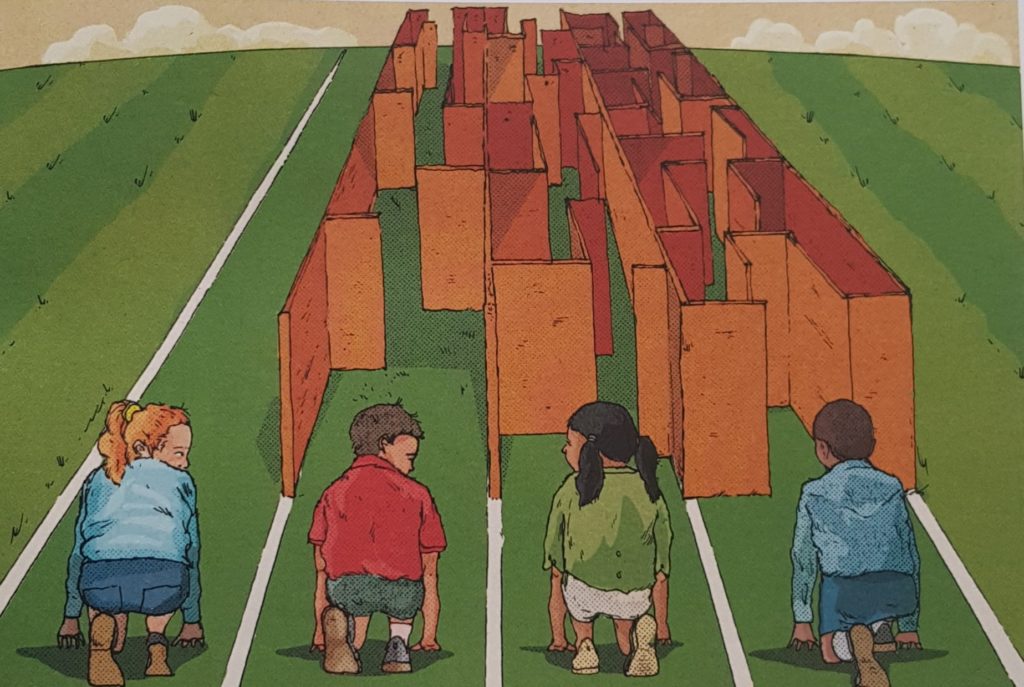
For instance, in urban areas, the educational →exclusion of Roma students might differ from those rural areas where the proportion of Roma students are higher, and where hence educational →segregation based on ethnicity might be more significant. Yet, educational →selection based on class might be more significant in urban areas, where private and elite schools can sort and pick children of the upper classes. Moreover, these two mechanisms might intersect in such cases in rural areas, when better off non-Roma families take out their children from the local rural school and enroll them into a more prestigious school of a larger city nearby (→white flight), which slowly makes the local school an ethnically segregated institution with low heterogeneity in terms of social status.
Reversing educational inequalities is important not only for its detrimental, future impact on society but also for its direct and immediate effects on children. The experience of exclusion, discrimination, and even selection can expose children to stress, depression, lower self-esteem, which might ruin their social relations and personal development. However, tackling educational inequalities is not possible without addressing wider inequalities in society. Approaching educational problems without taking into account the broader social context and structure would be theoretical isolationism, as *Stephen Ball calls it. Yet, fighting against educational inequalities entails a fight against other social issues as well as long as one holds that education can make a difference not only at the level of the individual but at the level of the society as well.
⥄ in tension with → educational disadvantage
Further readings:
Holsinger, D. B., & Jacob, W. J. (2008). Inequality in Education: A Critical Analysis. In D. B. Holsinger & W. J. Jacob (Eds.), Inequality in Education: Comparative and International Perspectives (pp. 1–33). Hong Kong: Springer.
Torpey-Saboe, N. (2019). Measuring Education Inequality in Developing Countries. Cham: Palgrave Macmillan.
Ball, S. J. (1997). Policy Sociology and Critical Social Research: A Personal Review of Recent Education Policy and Policy Research. British Educational Research Journal, 23(3), 257–274.
equal educational opportunity and equity
are interrelated terms in educational studies, because equal educational opportunity can only be achieved through equity. Equal opportunity in education doesn’t mean equal treatment, on the contrary: it requires differentiated educational treatment of the students, namely equitable education, which takes into account the different social, economical, cultural backgrounds, and the related social →inequalities children are exposed to.
Educational equity means recognizing students’ different circumstances and allocating educational resources needed according to them, so that each and every pupil acquires an equal educational opportunity to learn and develop, and to become socially mobile upwards.
Equity is the means by which education can reduce the impact that background factors exert on students’ educational outcomes. There are two important and interconnected aspects of equity, as discussed by *Leonidas Kyriakides et al: one is related to approaching equity as a question of fairness, that is concerned with minimizing the impact of social circumstances on educational outcomes; the other one is related to understanding equity as a question of →inclusion, which means ensuring that regardless of individual and social circumstances each and every child is provided access to education of quality.

In the illustration, there are different scenarios of treating individuals, who have unequal access and opportunity to the system (watching a baseball game in this case). Equality here refers to equal treatment: the equal distribution of existing resources, assuming that everyone will benefit from the same supports. Due to social →inequality, however, not everybody is starting out from the same place. Equity suggests that in order to ensure equal opportunity for all to enjoy the game, the same resources need to be allocated on an equitable basis (thus unequally), differentiating between individuals according to the principles of fairness and justice. There is, however, a third scenario, which problematizes systemic barriers (represented by the fence in the picture), which are often designed in an inequitable way to reward specific social groups through discriminatory practices. In this third scenario (→liberation) resources were utilized for the sake of removing systemic barriers so that all three can watch the game without the need for equitable treatment.
And this scenario, the aspect of liberation in education (→transformative education), points to the problematic aspects of equal educational opportunity and equity. While these concepts promote the equalization of chances (starting lines) and the reduction of the impact of background, still they might tolerate and allow for inequalities in terms of educational attainment, achievement, and outcomes. Moreover, as *Nicholas R. Johns and *Alison J. Green demonstrate, the model of equity can function as a justification of social and economic →inequalities, through promoting the equality of starting lines and the fairness of competition, while ignoring the fairness of procedures and the equality of outcomes.
If equitable educational treatment and equal educational opportunities were to exist, the fragmentation of the stages of compulsory education, the vertical and horizontal stratification of public schooling would still enable unequal access, qualifications, and outcomes. This doesn’t mean, however, that the model of educational equity has to be dismissed, but that first, the structural barrier (the →selective, fragmented character of compulsory education) has to be removed in favor of a unified, comprehensive school system that could allow for more equal outcomes. In it, however, the model and program of educational equity would still be of utmost importance, for it guarantees the differential and just treatment of students who stand on unequal grounds.
⥄ in tension with → transformative education → transformative praxis
Further readings:
Kyriakides, L., Creemers, B., & Charalambous, E. (2018). Equity and Quality Dimensions in Educational Effectiveness. Cham: Springer.
Johns, N. R., & Green, A. J. (2009). Equality, equal opportunities and diversity. Equal Opportunities International, 28(4), 289–303.
roots of unequal educational opportunity
→ educational disadvantage & deficit-model | segregation | exclusion | oppression
1 There are competing explanations about the causes of unequal educational opportunity. The most traditional way of interpreting the causes of unequal opportunities is putting the focus on educational disadvantages, which assumes that there is a causal connection between →disadvantage and educational success. It is called the deficit model of educational inequalities.
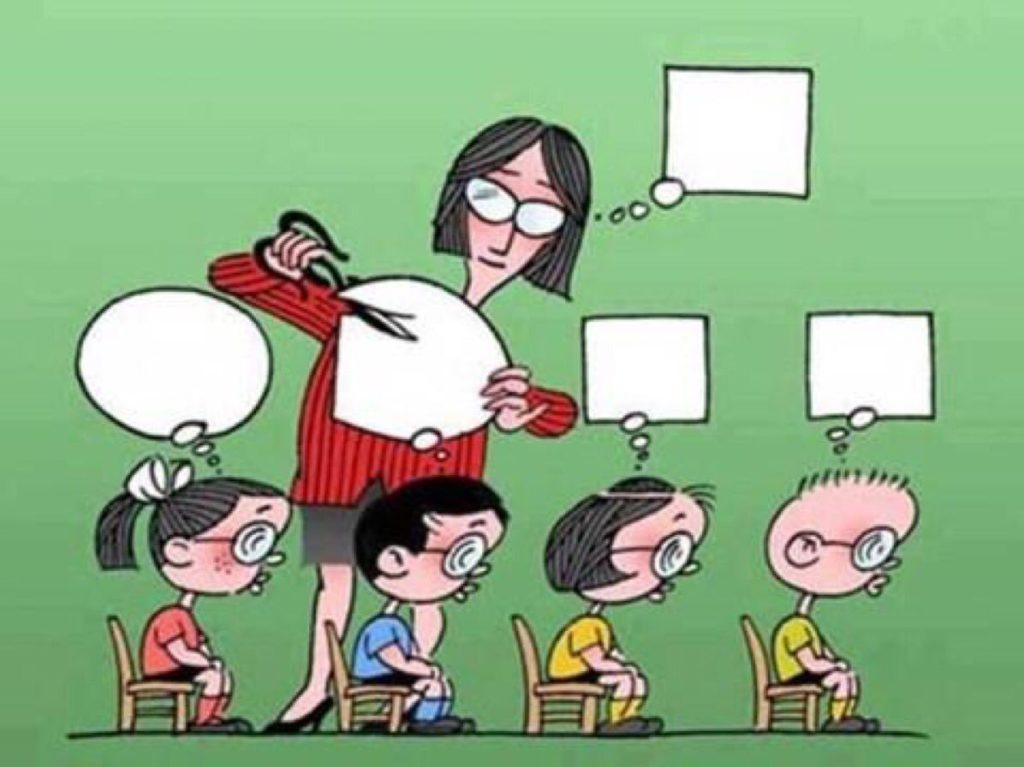
The deficit model assumes, that children with disadvantages “bring” their social hindrances into school as if the students would lack fundamental norms, knowledge, skills from an educational point of view.
*Lori Patton Davis and *Samuel D. Museus demonstrate in detail how this model is grounded 1) in a blame the victim approach; 2) in classist/racist discourses that frame disadvantaged children as deficient; and 3) in an elitist, monocultural approach to education.
2 The next approach focuses on segregation, interpreting it as the central cause of unequal opportunities. It assumes that through selective mechanisms advantaged groups manage to declare privileges in education, and as →selection goes hand in hand with discrimination, it leads to the segregation of children with disadvantages, exposing them to worse educational conditions.
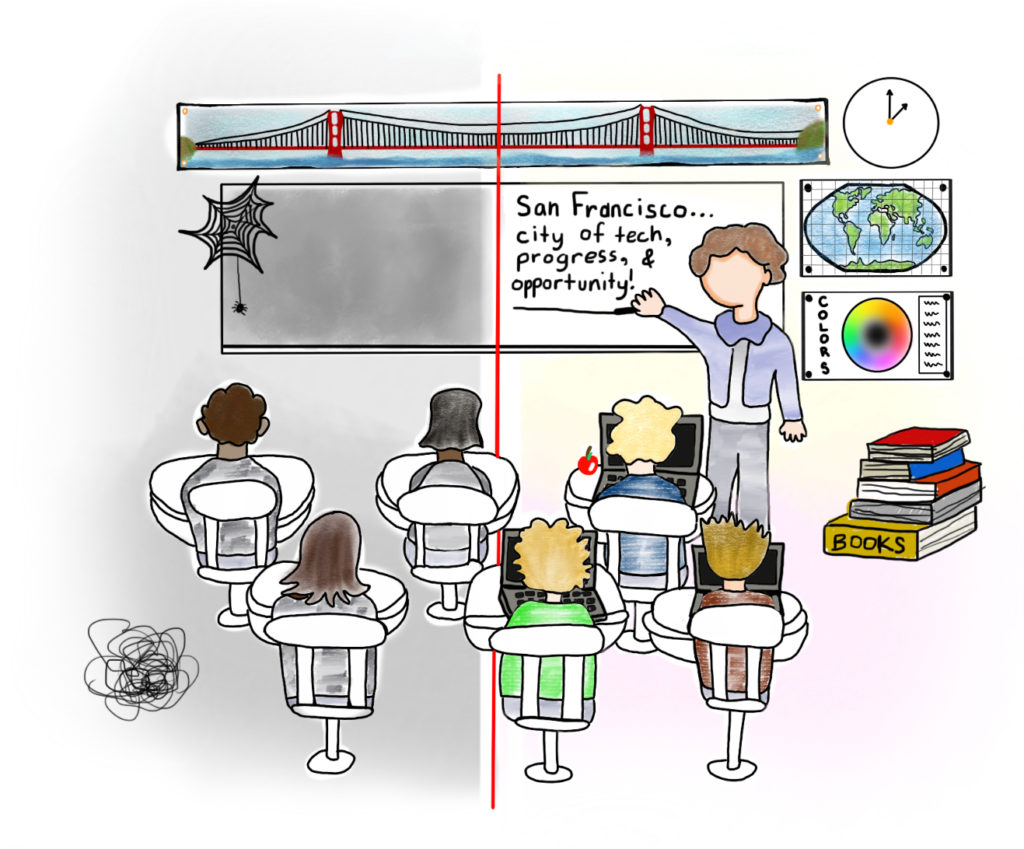
Segregation (=selection+discrimination) can occur within a school when teachers isolate a specific group of children in a separate classroom; or between schools, as the more well-off families achieve to take their children to more privileged institutions without concern for the disadvantaged, who are presumed to be lagging behind and pulling the more advantaged back.
As the *Council of Europe demonstrates, segregation effects, in particular, Roma children, children with disabilities, children with a migrant background, children living in institutions, and children in the juvenile justice system.
3 The third approach doesn’t deny the negative social impacts of segregation, but emphasizes the role of →exclusion and latent discrimination, understood here as the exclusion of a specific group of children from educational opportunities through discriminatory pedagogical practices. Here, the cause of unequal opportunity lies in the elitist, monocultural character of education which privileges the behaviors, knowledge, cultural customs of advantaged groups (~white, upper-class, heterosexual, able-bodied), thus excludes others (see *István Nahalka).

The cause of unequal opportunity is that due to the effects of exclusion and latent discrimination the social disadvantages of children transform into educational disadvantages. A socially disadvantaged child is likely to achieve worse educational results because education does not value her specific knowledge, skills, cultural customs, and language.
4 The last approach doesn’t deny the relevance of segregation or exclusion but argues that social structures play an important role here, yet in different ways than the deficit model suggests. This approach holds, that unequal educational opportunity is a consequence of systemic oppression rooted in social inequalities (see *Paulo Freire), which the school is historically designed to reproduce. The educational challenge according to this model is not only to provide equal opportunities for children to participate in a basically unjust system based on unfair competition but to contest, by the means of education, the social structures of oppression, which produce inequality in education.
Further readings:
Davis, L. P., & Museus, S. D. (2019). What Is Deficit Thinking? An Analysis of Conceptualizations of Deficit Thinking and Implications for Scholarly Research. NCID Currents, 1(1), 117–130.
Council of Europe. (2017). Fighting school segregation in Europe through inclusive education: a position paper.
Nahalka, I., & Zempléni, A. (2014). Hogyan hat az iskola/osztály tanulóinak heterogén/homogén összetétele a tanulók eredményességére. In K. Csullog, É. D. Molnár, B. Herczeg, J. Lannert, I. Nahalka, & A. Zempléni (Eds.), Hatások és különbségek (pp. 91–166). Budapest: Oktatási Hivatal.
Freire, P. (1993). Pedagogy of the Oppressed. London: Penguin Books.
ways to equal educational opportunity
→ compensation | desegregation | inclusion | liberation
According to the different explanations about the →roots of unequal educational opportunity, there are competing educational responses which all strive to do something about unequal opportunities.
1 The deficit model, which departs from the concept of →educational disadvantage asserts, that education has to compensate and complement disadvantaged students’ (assumed!) deficiency in knowledge, skills, and attitudes so that they can “catch up” with their more privileged peers.
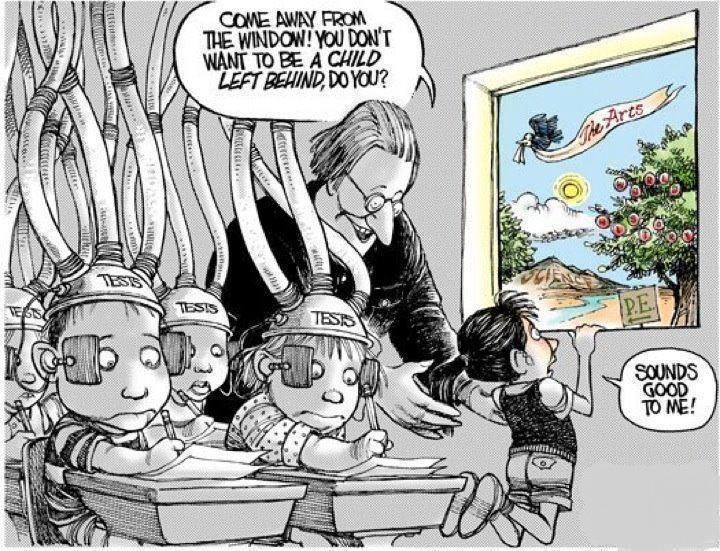
This compensatory model is often aligned with the concept of talent education, which holds that talented children should not “wait” for their peers with deficits to catch up, rather they should be given the chance to develop according to their “accelerated pace” separated from those students who would only “pull them back”.
As *Sally Power demonstrates, compensatory education is doomed to fail, as it doesn’t compensate what it should (lack of equality), while compensates what it shouldn’t (knowledge, skills, attitudes, language).
2 The approach that explains the roots of unequal educational opportunity based on →segregation argues, that the educational solution is the elimination of segregation – desegregation. This approach holds that fostering educational →integration requires the structural transformation of the →selective education system.
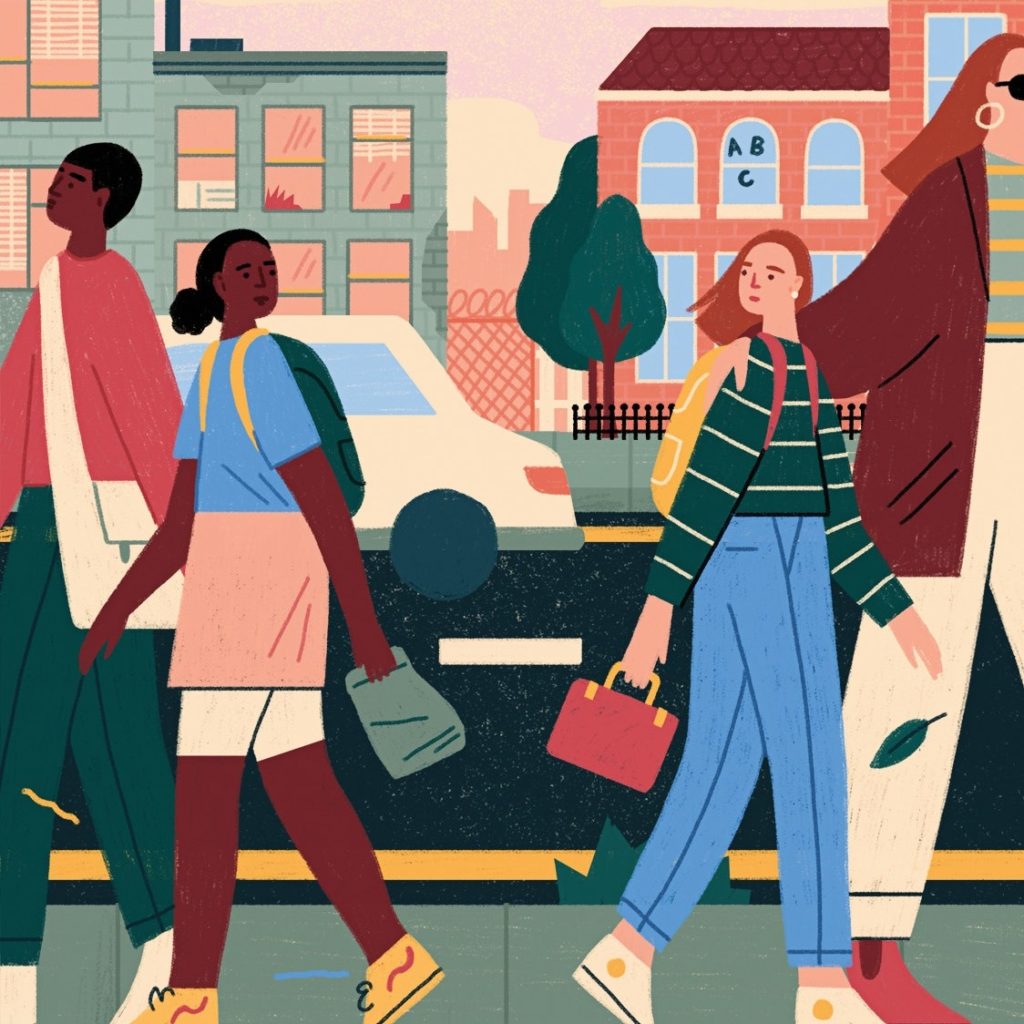
The program of desegregation holds that there is a need to develop an →integrative school system in which co-education prevails, not only in schools but also in the classrooms. Eliminating segregation depends on re-engineering the entire school system.
Desegregation is a complex strategy, as discussed by the *Roma Education Fund: it has serious considerations regarding teacher education, parental involvement, institutional assessment.
3 The model of →exclusion holds that desegregation is insufficient as long as it is not followed by the transformation of pedagogical culture. Since the →root of unequal opportunity – according to this model – lies in that social disadvantages are transformed into →educational disadvantages through pedagogical practice, the task is to foster the culture of inclusion and the approach to inclusive education in policy-making as well as in the culture of pedagogical practice.
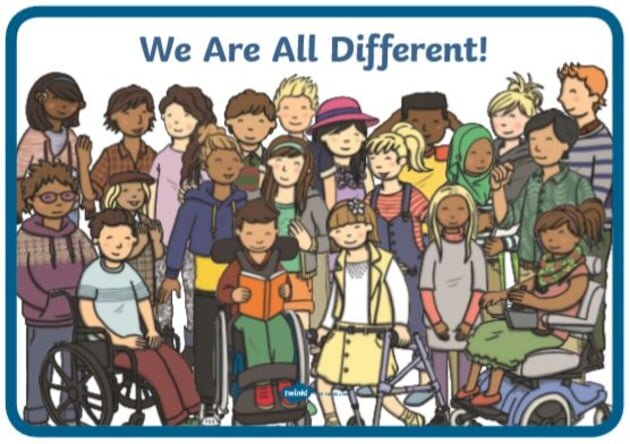
Inclusive education here not only refers to the →integration of students into heterogeneous classrooms but also to the pedagogical culture and practice of →inclusion, which strives to annul the ways →disadvantages determine educational opportunities by appreciating the diversity of students not only in terms of culture but also regarding knowledge, skills, attitudes, abilities.
As *Ilektra Spandagou et al. emphasize, the concept of inclusion is an educational endeavor in a double sense: as a pedagogical culture and approach, and as a structural program that strives to transform the whole system of schooling.
4 The model of oppression argues, that both desegregation and inclusion are important goals to achieve →equal educational opportunity, yet these interventions can not challenge the underlying structures of educational injustices, they can not tackle the drastic inequality of outcomes. The only thing these efforts can guarantee is equal opportunity in a structurally unequal system. What is needed, as *Peter McLaren argues, is a pedagogy which liberates the students from the shackles of the prevailing order and thus lays the groundwork for enhancing systematic transformation.
Further readings:
Power, S. (2018). How should we respond to the continuing failure of compensatory education? Orbis Scholae, 2(2), 19–37.
Roma Education Fund. (2015). Making desegregation work! A Desegregation Toolkit Developed by the Roma Education Fund.
Spandagou, I., Little, C., Evans, D., & Bonati, M. L. (2020). Inclusive Education in Schools and Early Childhood Settings. Singapore: Springer.
McLaren, P. (2015). Pedagogy of Insurrection: From Resurrection to Revolution (Education and Struggle). New York: Peter Lang.
bookshelf of the section
